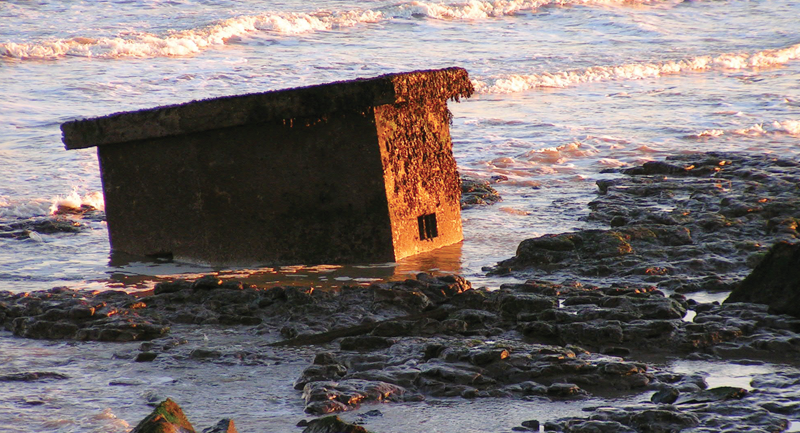- A feature from the January 2017 issue of Suffolk Norfolk Life magazine
 Click to view this issue »
Click to view this issue » - Category
- Nature
Suffolk’s beaches and cliffs hold evidence of a tropical past. Laurie Forsyth tells the story of London Clay.
In November I was at East Lane, Bawdsey, and saw the North Sea working hard to demolish the sea cliff. It is an interesting cliff: at its top, there is orange-yellow shelly sand, and below, blue-grey clay that merges into the shingle at its foot. The sticky clay gives no outward clue to its truly astonishing history, but locked inside is fossil evidence of a tropical world that existed far away, and scores of millions of years before the earliest ancestral ‘man’ evolved in Africa. Geologists call it the London Clay.
At low tide you can see the clay extends beyond the shingle out into the sea. Wave action has planed it to a flat terrace, and when wet it is as slippery as ice. Innumerable pockets and holes have been eroded into the clay, and each is a small pool of seawater, with shingle, sand and tiny crabs. Rearing out of the wet clay is an intact WW2 army pillbox that was perched on top of the cliff 60 yards away, before ceaseless wave action brought it down. In its way, it is as much a fossil as all the others scattered along this remarkable beach.
The London Clay is an ancient seabed. It was formed in what geologists call the Eocene epoch, which began 56 million years ago, and lasted some 20 million years. Beginning with a hot, greenhouse climate triggered by atmospheric warming, and with forests extending as far north and south as the Polar regions, it cooled drastically, and finally ended as an icehouse. At its warmest – about 49 million years ago – there was probably no ice anywhere on Earth, and temperatures at the Poles and the Equator may have been broadly similar.

